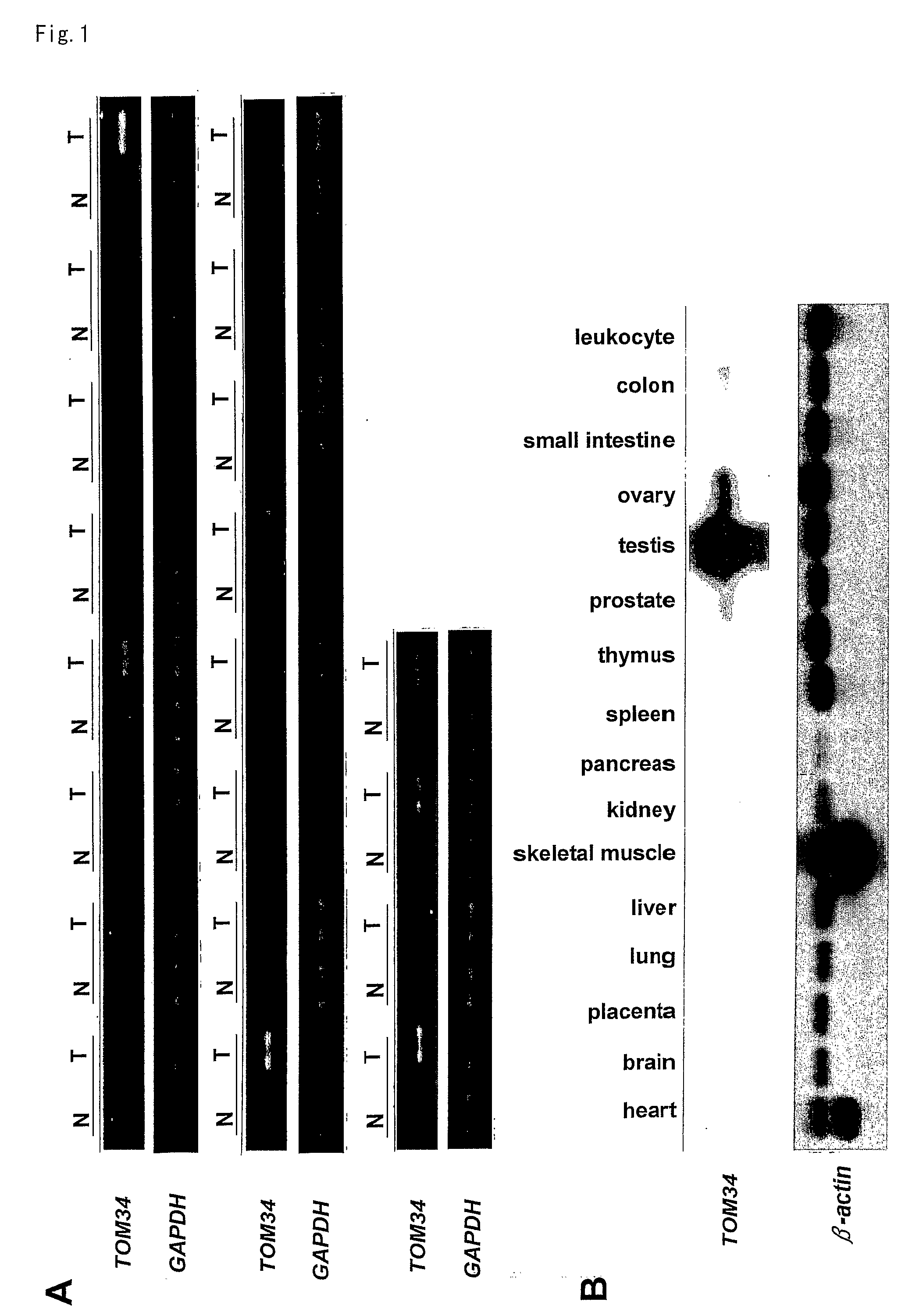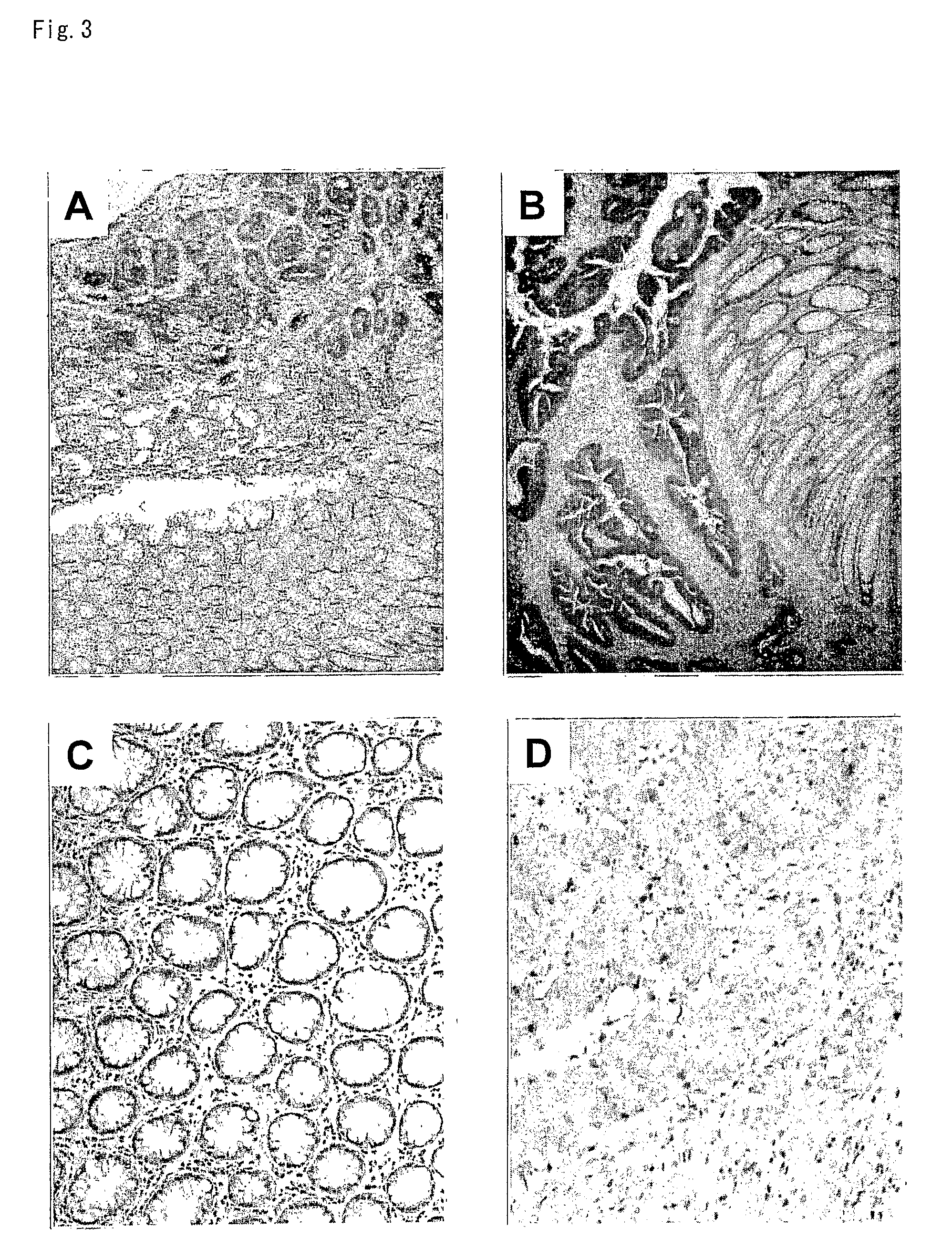Colon cancer related gene tom34
a colon cancer and gene technology, applied in the field of colon cancer detection and diagnosis, can solve the problems of high mortality, unresolved biological role of tom34, and inability to inhibit or cell death
- Summary
- Abstract
- Description
- Claims
- Application Information
AI Technical Summary
Benefits of technology
Problems solved by technology
Method used
Image
Examples
examples
Cell Lines and Clinical Materials
[0242]Human colon cancer cell lines HCT116 and RKO were obtained from the American Type Culture Collection (Rockville, Md.). All these cells were cultured as monolayers in appropriate media, McCoys 5A (Invitrogen, Carlsbad, Calif.) for HCT116 and RPMI 1640 (Sigma-Aldrich Corporation, St. Louis, Mo.) for RKO, supplemented with 10% fetal bovine serum (Cansera International Inc., Ontario, Canada) and 1% antibiotic / antimycotic solution (Sigma-Rich). Cells were maintained at 37° C. in an atmosphere of humidified air with 5% CO2. Cancerous tissues and corresponding noncancerous mucosae were excised from 12 patients during surgery, after informed consent had been obtained.
[0243]TISI cells (HLA-A24 / 24) and EHM (HLA-A3 / 3), human B-lymphoblastoid cell lines, were generous gifts from Takara Shuzo Co, Ltd. (Otsu, Japan). The TISI cells were used for peptide-mediated cytotoxicity assays. Colorectal carcinoma cell lines DLD-1 (HLA-A24 / 02), HT29 (HLA-A24 / 01) and SN...
PUM
| Property | Measurement | Unit |
|---|---|---|
| weight | aaaaa | aaaaa |
| Tm | aaaaa | aaaaa |
| weight | aaaaa | aaaaa |
Abstract
Description
Claims
Application Information
 Login to View More
Login to View More - R&D Engineer
- R&D Manager
- IP Professional
- Industry Leading Data Capabilities
- Powerful AI technology
- Patent DNA Extraction
Browse by: Latest US Patents, China's latest patents, Technical Efficacy Thesaurus, Application Domain, Technology Topic, Popular Technical Reports.
© 2024 PatSnap. All rights reserved.Legal|Privacy policy|Modern Slavery Act Transparency Statement|Sitemap|About US| Contact US: help@patsnap.com










